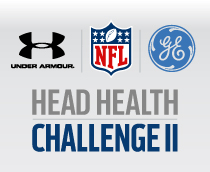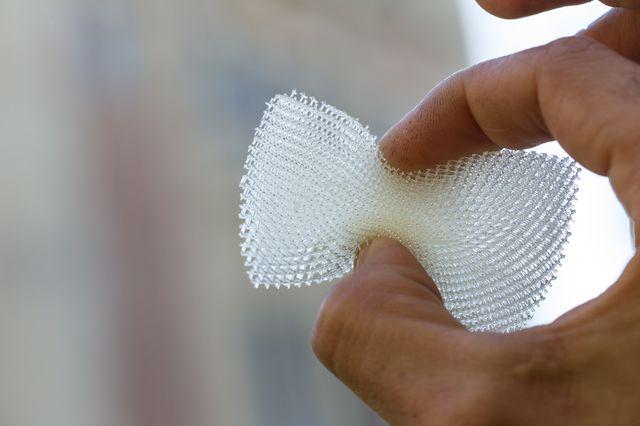UCLA and Architected Materials 3D Print Protective Material for Helmets, in NFL’s Head Health Challenge
Professional football isn’t getting less physical but, in the wake of national attention, concerns are becoming more prominent regarding the risk of brain injury to players. In September 2014, the New York Times published an article citing a study by the Segal Group conducted at the behest  of the NFL (National Football League), which found that one in three players is likely to “develop long-term cognitive problems” as a result of head injuries during play. According to the study, such problems become apparent at, said the study, “notably younger ages” in professional football players “than in the general population.”
of the NFL (National Football League), which found that one in three players is likely to “develop long-term cognitive problems” as a result of head injuries during play. According to the study, such problems become apparent at, said the study, “notably younger ages” in professional football players “than in the general population.”
The NFL was sued by players and has, as a result, become proactive in looking for ways to detect head injuries early on to, ideally, prevent long-term consequences if they happen. In the Spring of 2014, the NFL joined forces with Under Armour, the sporting apparel and equipment comp any, and GE (General Electric) to encourage scientists, researchers, and sports enthusiasts to create new tools for preventing, detecting, and diagnosing concussions.
any, and GE (General Electric) to encourage scientists, researchers, and sports enthusiasts to create new tools for preventing, detecting, and diagnosing concussions.
The Head Health Challenge, which will run in parts over four years, launched by the NFL, GE, and Under Armour, will award up to $40 million to reward participants creating innovative solutions “that produce advancements in preventing, measuring and detecting brain injury, innovative brain protective materials and devices, and training methods that result in behavior modifications.”
One solution was a 3D printed “microlattice” of materials that were engineered to lessen the impact of a blow to the head. A team of scientists at the University of California in Los Angeles (UCLA) worked with the firm Architected Materials, Inc. to produce an “energy-absorbing material” that can replace the standard foam padding now provided in helmets of professional football players. When 3D printed, the material — Architected Lattice — looks something like a “delicate honeycomb.”
The material would line the entire interior of the helmet and will potentially be designed to vary in different areas of the helmet depending upon where the head is more vulnerable and force is a greater threat and more likely to cause damage.
The new material, which is still undergoing testing at UCLA, is also designed to conduct air around the inside of the helmet. “One of the things we’ve seen early on,” said one UCLA researcher, “is that this material can load up many times and recover very quickly,” which means it can absorb an impact and return to its original, force-receptive state almost immediately.
In virtually every way, the new 3D printed material seems superior to the foam that has been used in football helmets. In the lab testing where force is simulated with machines, the archicted lattice is coated with “carbon nano-tubes,” which send a kind of electrical signal to the researchers’ computers, providing critical data regarding where more impact is likely to take place and how the microlattice responds.
The material is still being developed as the researchers continue various tests that will assist them in making it as effective — and protective — as possible. Let us know what you think about this material over the Head Health Challenge Architected Lattice forum thread at 3DPB.com.
Subscribe to Our Email Newsletter
Stay up-to-date on all the latest news from the 3D printing industry and receive information and offers from third party vendors.
You May Also Like
Precision at the Microscale: UK Researchers Advance Medical Devices with BMF’s 3D Printing Tech
University of Nottingham researchers are using Boston Micro Fabrication‘s (BMF) 3D printing technology to develop medical devices that improve compatibility with human tissue. Funded by a UK grant, this project...
3D Printing Webinar and Event Roundup: April 21, 2024
It’s another busy week of webinars and events, starting with Hannover Messe in Germany and continuing with Metalcasting Congress, Chinaplas, TechBlick’s Innovation Festival, and more. Stratasys continues its advanced training...
3D Printing Webinar and Event Roundup: March 17, 2024
It’s another busy week of webinars and events, including SALMED 2024 and AM Forum in Berlin. Stratasys continues its in-person training and is offering two webinars, ASTM is holding a...
3D Printed Micro Antenna is 15% Smaller and 6X Lighter
Horizon Microtechnologies has achieved success in creating a high-frequency D-Band horn antenna through micro 3D printing. However, this achievement did not rely solely on 3D printing; it involved a combination...






























